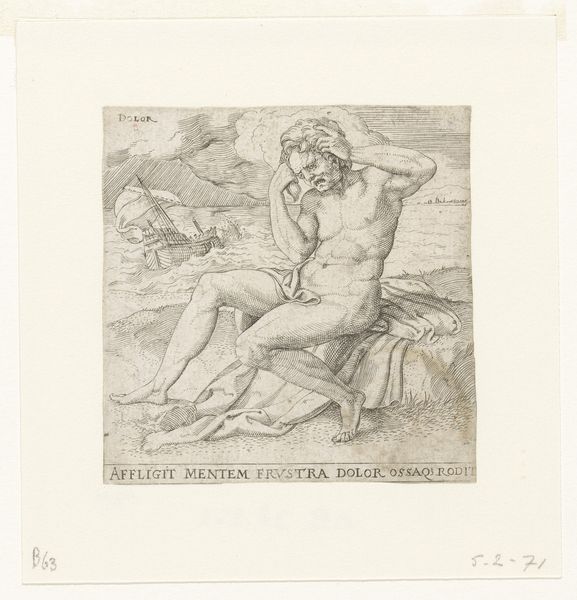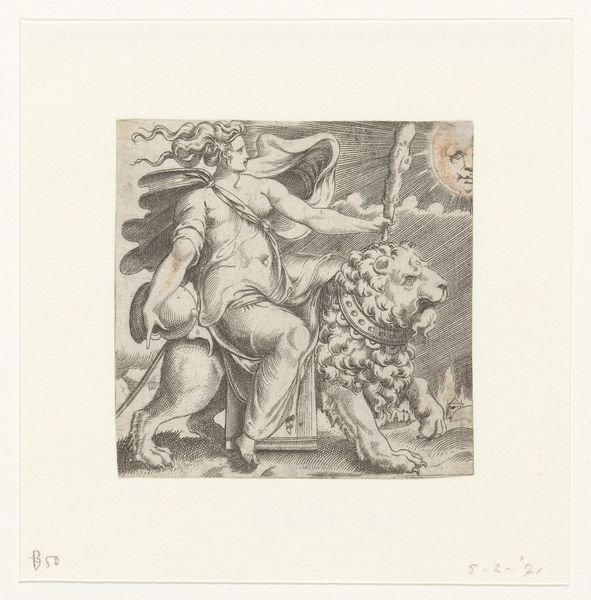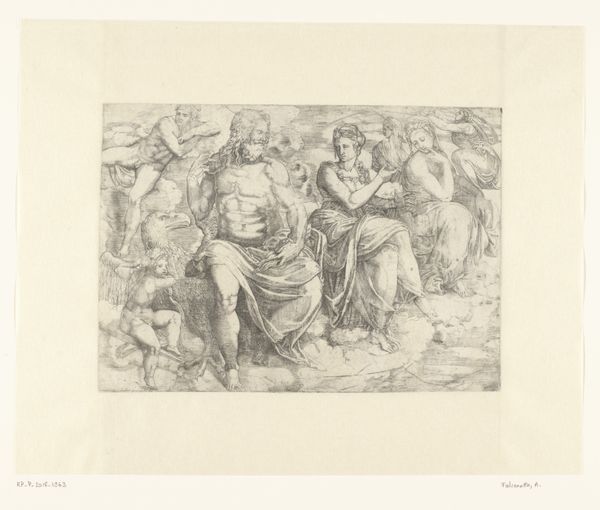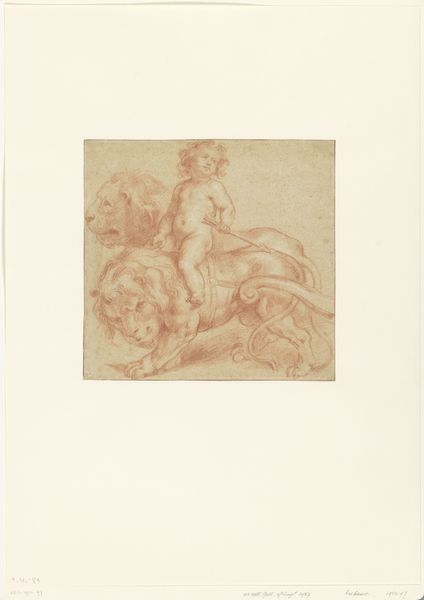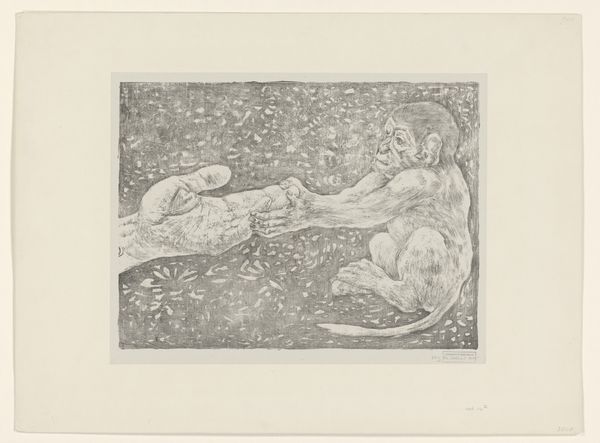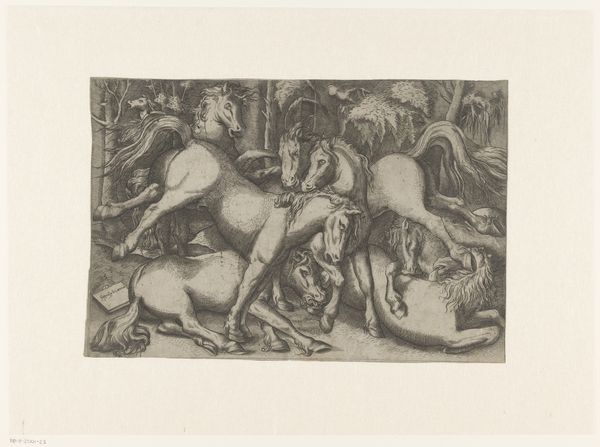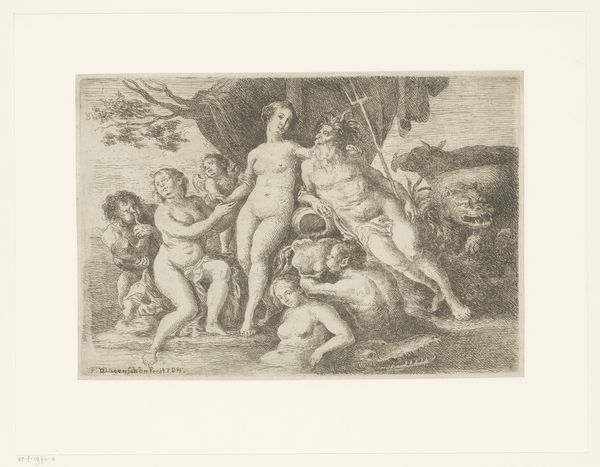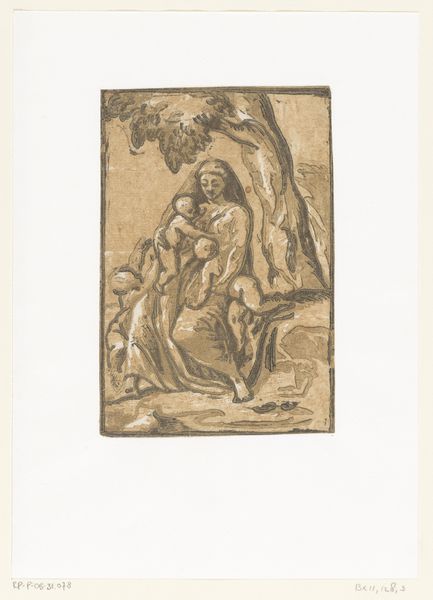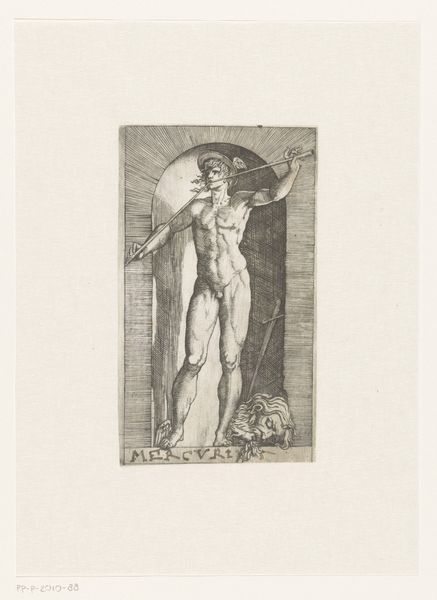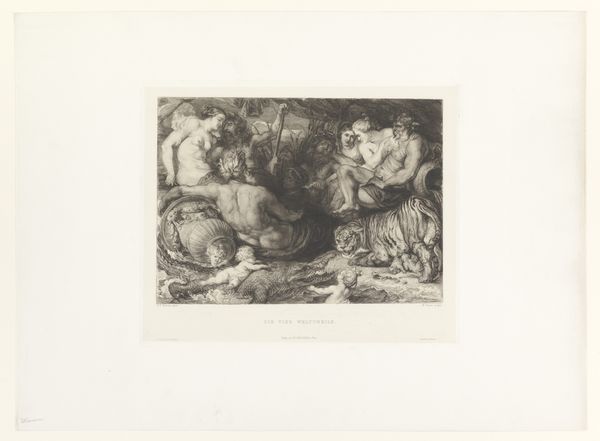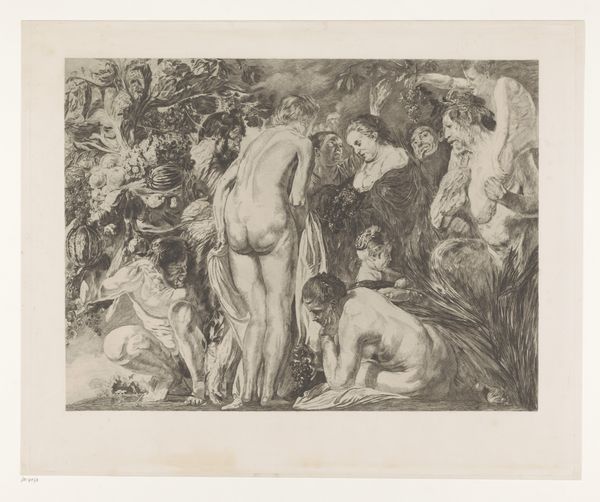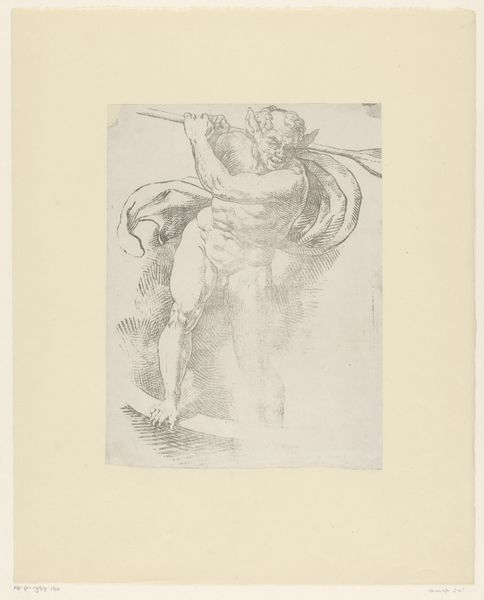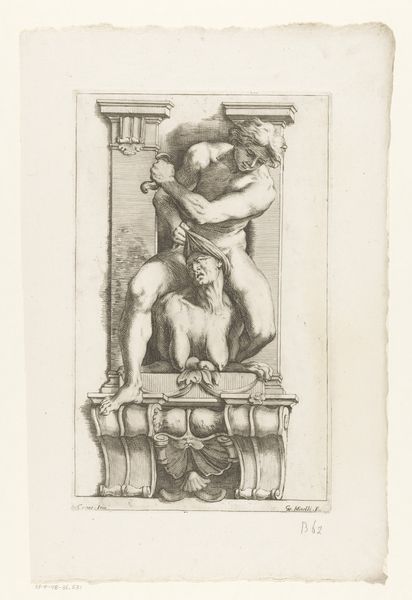
print, paper, engraving
#
allegory
# print
#
mannerism
#
figuration
#
paper
#
history-painting
#
nude
#
engraving
Dimensions: height 79 mm, width 76 mm
Copyright: Rijks Museum: Open Domain
Enea Vico created this engraving, titled Wijsheid, in the 16th century. During the Renaissance, prints like these weren't just art; they were a vital form of mass communication, spreading ideas and images across Europe. Look closely, and you will see how Vico uses the visual language of classical mythology to explore Renaissance concepts of knowledge and power. At the forefront, Wisdom, personified as a muscular, bearded man, dominates the scene. His posture—foot firmly planted on a defeated figure—speaks volumes about the era’s hierarchical worldview. How does this idealized, masculine representation of wisdom reflect or challenge the social norms of Vico’s time? Consider the relationship between the active, knowing male figure and the passive, subjugated one. What does it tell us about the connections between knowledge, gender, and authority in the Renaissance imagination? This isn't just a picture of wisdom, but a statement about who gets to claim it and who is excluded.
Comments
No comments
Be the first to comment and join the conversation on the ultimate creative platform.
